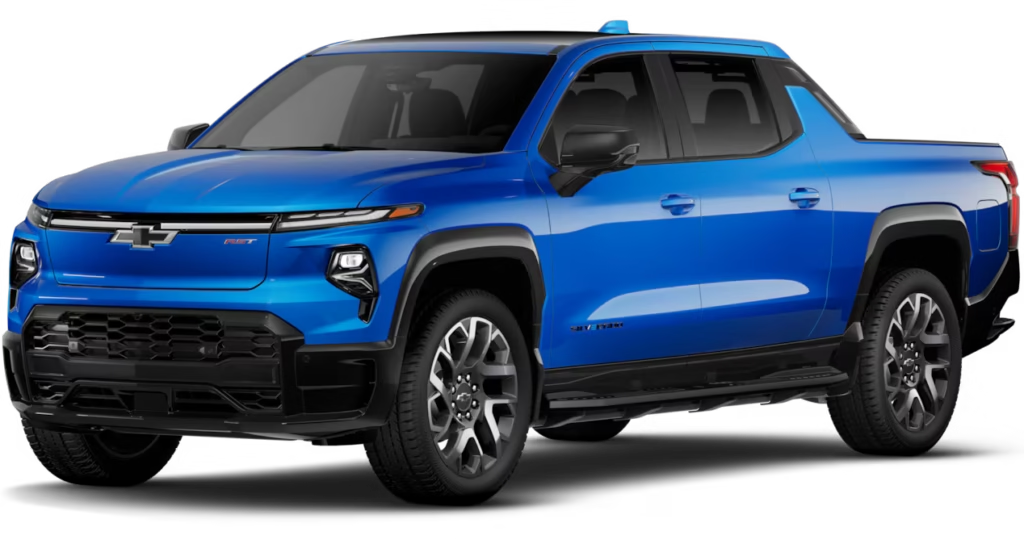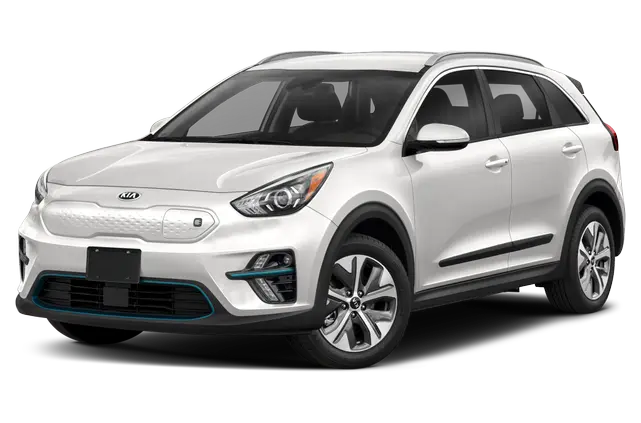The $35,000 barrier has finally fallen. After years of empty promises about affordable electric pickups, the used market—not the manufacturers—has finally delivered. Early adopters have moved on, fleets are cycling inventory, and that means real opportunities for those of us who couldn’t justify dropping $70K+ on a first-generation electric truck.
I’ve spent the last few months hunting these trucks down at auctions, dealer lots, and through private sales. I’ve driven them in conditions ranging from desert heat to Midwest snow. I’ve charged them on everything from 120V outlets to the latest 350kW DC chargers. And I’ve talked with dozens of owners about their real-world experiences.
The verdict? There are legitimate options in this price range, though each demands specific compromises. Here’s what you need to know before jumping into the used electric truck market.
Ford F-150 Lightning Pro: The Safe Bet
Typical prices: $32,000-$35,000 for 2022-2023 models with 45,000-65,000 miles
Ford’s work-truck spec Lightning might lack creature comforts, but it’s proving to be the Toyota Camry of electric trucks: utterly reliable, widely supported, and free from drama. Most examples in our price range come from fleet service—think utility companies and municipal governments—which typically means consistent maintenance and highway miles rather than heavy abuse.
A 2022 Standard Range Pro I tested last month had 58,000 miles and showed minimal battery degradation. It delivered 209 miles of range during a mixed driving loop—impressive considering its original 230-mile EPA rating. The vinyl seats and rubber flooring might not scream luxury, but they’ve held up remarkably well compared to the more premium interiors in high-spec Lightnings.
The Lightning’s biggest advantage is Ford’s vast dealer network. When something eventually needs attention—and something always does—you won’t be waiting weeks for service like Rivian owners often report. Parts availability remains excellent, and Ford’s commitment to the platform means software updates continue rolling out regularly.
Watch for fleet trucks that lack DC fast charging capability—yes, it was optional on early Pro models, and some fleet managers skipped it to save costs. Also verify the battery size, as the Standard Range (98 kWh) and Extended Range (131 kWh) variants show up at similar price points depending on condition and options.
Rivian R1T: The Premium Experience (If You Can Find One)
Typical prices: High-mileage Launch Editions occasionally dip under $35,000
Let’s be clear: finding an R1T under $35K requires patience. Your best hope lies with early 2022 builds carrying 80,000+ miles, typically from owners who drive for work or pulled extensive road trips. These represent the steepest depreciation curve in the segment—these trucks originally commanded $75,000-$95,000 when new.
Is the hunt worth it? Absolutely. Even with serious miles, a well-maintained R1T delivers an experience that makes other trucks in this price range feel prehistoric. The quad-motor setup still delivers neck-snapping acceleration while providing genuine off-road capability. The air suspension continues working its magic, though early units often develop compressor noise over time.
The gear tunnel remains the R1T’s killer feature—a pass-through storage space behind the cab that’s perfect for awkward cargo like golf clubs or fishing rods. The front trunk offers additional secure storage, though it’s not as cavernous as the Lightning’s.
Service presents the biggest challenge. Unless you live near a Rivian service center, plan on traveling for maintenance. The company’s mobile service helps with minor issues, but significant repairs still require a physical service location. This reality has driven some of the depreciation that makes these trucks attainable.
Early production R1Ts (before June 2022) had more quality hiccups—particularly with the powered tonneau cover and cabin electronics. Later builds show much better consistency, but those rarely hit our price threshold. Always verify the build date via the driver’s door sticker.
Tesla Cybertruck RWD: The Conversation Starter
Typical prices: Base RWD models occasionally appear under $35,000, usually with issues
The Cybertruck‘s polarizing design continues dividing opinions, but one thing is certain: it turns heads like nothing else at this price point. Finding one under $35K requires compromise—typically accident history, high mileage, or both. Tesla’s production constraints mean most Cybertrucks still command significant premiums, but motivated sellers occasionally break our price ceiling.
The stainless steel exoskeleton means even accident-repaired units often look remarkably good cosmetically. This presents a double-edged sword—great for appearance, but potentially masking structural issues. Always get a thorough inspection from a Tesla-knowledgeable shop before purchase.
The Supercharger network remains Tesla’s ace card. The seamless charging experience—particularly on road trips—makes the Cybertruck more practical than its competitors despite its quirks. Recent compatibility upgrades mean owners can access both Tesla’s network and standard CCS stations, though the latter requires an adapter.
Early production quality proved hit-or-miss, with issues ranging from water leaks to uneven panel gaps. Software has improved significantly through updates, but the hardware limitations remain. Always verify that all recalls (including the recent window motor fix) have been addressed.
The base RWD Cybertruck isn’t quick by Tesla standards—0-60 mph takes around 6.5 seconds—but still delivers more than enough performance for typical truck duties. Range hovers around 250 miles in mixed driving, though highway cruising at 75+ mph can drop that closer to 210.
Chevrolet Silverado EV: The Late Arrival

Typical prices: Work Truck models occasionally appear under $35,000, mostly from fleet sales
GM’s entry remains the rarest find in our price range, with limited production meaning limited used inventory. Work Truck models occasionally appear from commercial fleet liquidations or rental car companies cycling out inventory. When they do show up, they typically represent solid value—particularly if you prioritize charging speed and range.
The Ultium platform delivers impressive efficiency for such a large vehicle. A fleet example I tested with 42,000 miles still delivered 265 miles of range on a full charge—not far from its original 279-mile EPA rating. The 350kW peak charging capability means the quickest top-ups in the segment, adding up to 100 miles of range in just 10 minutes on the right charger.
The midgate—allowing the bed to extend into the cabin—gives the Silverado EV exceptional cargo flexibility that no competitor can match. It’s a genuine innovation rather than a gimmick, particularly for those who occasionally need to haul longer items.
Software remains the biggest pain point. Early builds suffered numerous glitches that required dealer intervention, and GM’s over-the-air update cadence hasn’t matched Tesla or Rivian. Always verify the truck has the latest software before purchase, and budget for potential dealer visits if issues arise.
The Range Reality Check
Manufacturer range estimates assume ideal conditions—moderate speeds, perfect temperatures, flat terrain. Here’s what you’ll actually experience:
Highway cruising at 75 mph: Expect 75-85% of the rated range. The Lightning and Silverado EV suffer most at highway speeds due to their traditional truck profiles, while the R1T and Cybertruck fare slightly better.
Cold weather: Sub-freezing temperatures cut range by 20-30% across all models, with the Rivian showing slightly better cold-weather performance in my testing.
Towing: The killer app for trucks becomes the Achilles’ heel for electric versions. Towing 5,000 pounds typically slashes range by 40-50%, with the Lightning performing marginally better in this metric.
Hard acceleration: Unlike gas trucks, where aggressive driving might cost you 3-4 MPG, repeated hard acceleration in an electric truck can noticeably impact range. The difference between gentle and aggressive driving can approach 15% in range impact.
The Battery Health Question
Battery degradation remains the biggest concern for used EV buyers, but the data is encouraging. Most trucks show 5-10% capacity loss in the first 50,000 miles, followed by a much slower decline thereafter.
Ford has demonstrated the most consistent battery health, with most high-mileage examples retaining 90%+ capacity. Rivian units show more variability, particularly those used frequently for DC fast charging. Tesla’s data remains limited for the Cybertruck specifically, but their sedan and SUV battery packs have proven durable over time.
Always get a professional battery health assessment before purchase. Expect to pay $150-200 for a comprehensive dealer diagnostic, money well spent considering the battery represents roughly 40% of the vehicle’s value.
The Bottom Line
For truck buyers ready to go electric without breaking the bank, 2025 offers legitimate options under $35,000 for the first time. The Lightning Pro delivers the most conventional truck experience with the widest service network. The R1T offers premium features and exceptional performance if you can find one in budget. The Cybertruck brings charging convenience and distinctive styling, albeit with potential reliability concerns. And the Silverado EV, while scarce, delivers impressive range and charging speeds.
Just remember that evaluating a used electric truck requires a different approach than its gas-powered counterparts. Battery health, software status, and charging network compatibility matter as much as traditional mechanical condition. Get these right, and these first-generation electric trucks can deliver exceptional value on the used market—along with the instant torque, reduced operating costs, and home charging convenience that make EVs compelling in the first place.






